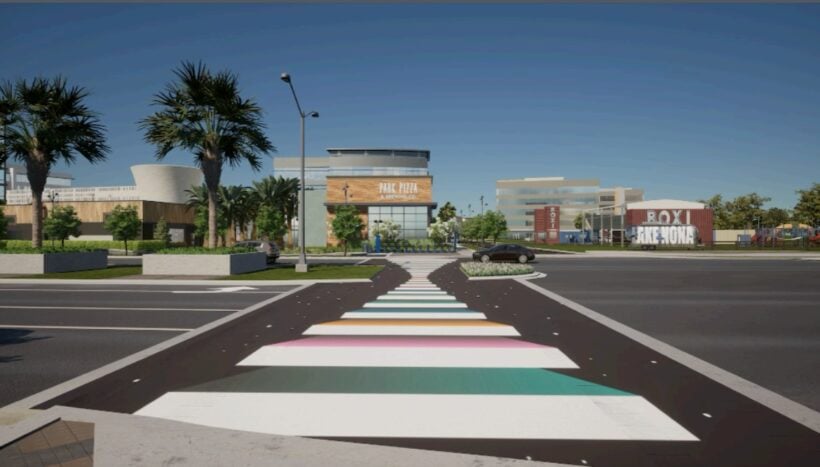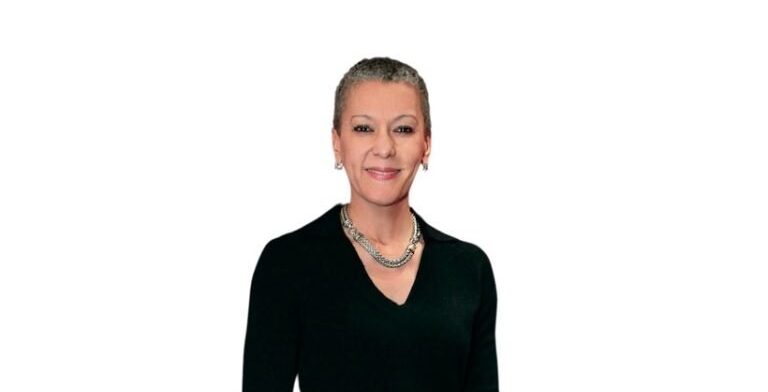This is the way Senior Vice President of Innovation at real estate company Tavistock, Juan Santos, describes the first architectural models of its Lake Nona community. Top designers and city planners had weighed in on their creation. The developer was knocked out by their quality. The only problem? They were, well, physical. As such, changes could only be made at great cost and at least semi-permanently.
Cue: the creation of the “digital twin” of this “living lab” Orlando community that replaced them. Santos says, “Our [superpower] is that we’re not afraid to change and we wanted to keep changing.” Design mistakes were easily assessed and ultimately avoided, from the number of palm trees in a sculpture garden being tripled to effectively shade residents on hot Florida days, to a shopping center’s location being shifted to prevent congestion.

Digital twins are interactive and 3D replicas of physical objects, or physical objects-to-be, that can test-run scenarios and have predictive capacities enabled by data and AI. Because of their ease of use across many industries their popularity is taking off. In manufacturing, BMW and Nvidia’s Omniverse platform—which creates digital twins—have teamed up to maximize the former’s auto factory functions globally. BMW can now test out robot placement and optimize assembly line layouts in the design stage. In healthcare, digital twins of organs show promise in predicting which treatments and surgeries are best suited to an individual. Soon, the idea is, entire human “digital twins” will serve as practice cases when it comes to diagnosis and even prevention of health problems. Digital twins also have a surprisingly long and distinguished history. Their first widely known use was by NASA, when oxygen tanks exploded during the Apollo 13 mission. (This was the “Houston, we have a problem” moment.) Engineers used on-the-ground simulators to determine how to best bring the space travelers home. The rest, of course, is literally history.

But perhaps no digital twins will be more powerfully employed than those in urban planning and property operations. Orlando is at the tip of the spear in terms of this use. Outsiders might be surprised at the city’s world class status in the field but to locals it makes sense. The city, known for attracting 60 million tourists to Disney World annually, has a track record in creating cutting-edge experiences after all, and digital twins are a similarly immersive technology. Orlando also has a strong defense industry. Its AR/VR, and simulation and training capabilities in the sphere—also important for the creation of digital twins—generate $6 billion annually. The city is home to powerful gaming and AI companies as well, both of which figure in digital twin-building. (Gaming engines are the foundation of 3D digital twins. AI helps in their integration of data, and analytical and predictive capacities.)
Another impressive example of a digital twin comes from the Orlando Economic Partnership. Its 3D replica maps the region’s 800 square miles, with roughly 50 of those miles in high-fidelity. Viewers are wowed by the OEP in-office display, which consists of 180 degree floor-to-ceiling LCD panels controlled at the touch of an iPad. For site selectors and CEOs from companies considering a move to or expansion within Orlando, it’s invaluable. “If a company’s evaluating, say, five sites in Central Florida, not only could we maybe eliminate two or three so we’re only taking the time to drive them out to one or two, but it can give them a great sense of the region,” says the nonprofit’s President and CEO Tim Giuliani. Indeed: Pinch and zoom capabilities show terrain in granular detail. Demographic information, real estate prices, and areas of industry concentration can be overlaid on the twin’s graphics instantly. Giuliani says the twin is useful to local lawmakers as well. “We envision it as a theater for decision makers to be able to look at [issues that might affect] proposed projects. We also think such visualization provides a better understanding of the impacts of policy.”

Santos says local excellence in the field not only allows Lake Nona to be designed in a forward-thinking way but helps it run effectively. He notes that while Lake Nona’s visual twin still requires some manual processes when it comes to creating simulations, it’s 80% of the way there. (Santos also notes that the idea of a single “digital twin” is often a misnomer—or applied to replicas which don’t have simulation capability. Lake Nona also has an operational “dashboard” twin that displays real-time wifi usage, parking garage utilization, and more to supplement it.) In the future, he sees the tool’s increasing sophistication via AI enabling not only instant simulations but ever more optimization of residents’ lives. “Operators will be able to say, ‘You know, it’s looking like the parking garages are getting full. Do we need more shifts in the restaurants’?…Or if it rains, if you’re a business operator then you figure out, ‘I’m going to have people with umbrellas at the door.’” Dorian Vee, co-founder and Chief Technology Officer of Imerza, the company that created Lake Nona’s visual twin, describes such evolution of use: “It creates a circular economy where developers can really maximize the twins’ value…The ROI pays off in multiple ways.”
Santos concurs and sees digital twins as a creative game-changer. “For people that build environments, even though they’re creating places, their end objective is to create experiences…And the twin allows this possibility of ‘What if?’ at a scale that goes beyond just past experience. It also allows you to understand effects that may be too far away from your area of expertise but that have a critical impact in the way that people live.” In other words, it allows builders to dream. And then – in a future-forward and cost effective way – to make those dreams a reality.







